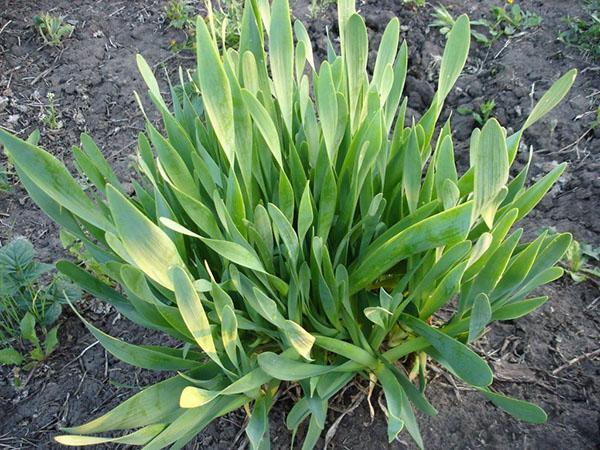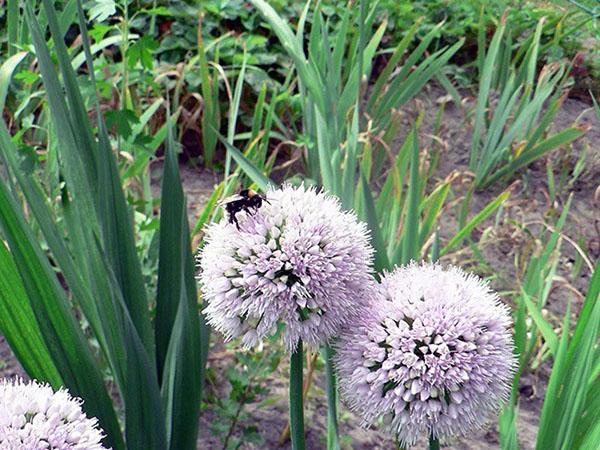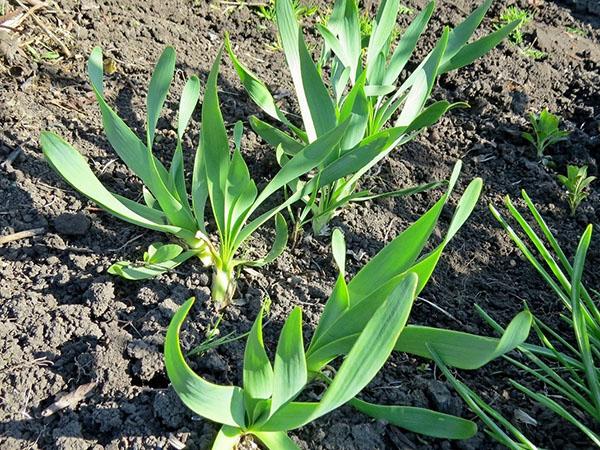Easy cultivation of slime onions in open beds
 Growing slime onions is a simple procedure that even a beginner, inexperienced gardener can handle. To do this, you will need to know the characteristics of the plant and possess information regarding caring for it.
Growing slime onions is a simple procedure that even a beginner, inexperienced gardener can handle. To do this, you will need to know the characteristics of the plant and possess information regarding caring for it.
What is the peculiarity of slime onion

Bow characteristic:
- The plant is characterized by flat leafy plates that resemble iris. Their length reaches 25 cm and their width is about 1.8 cm.
- The slime has a small false bulb with snow-white scales. Its diameter is within 2.5 cm.
- The bush of the bulb is spreading, stocky.
- Inflorescences are spherical, lush. The flowers have a pale pink tint. The first buds appear in the second year of the plant's life.
- The arrow on which the inflorescence is located is long. It reaches 70 cm in height.
The number of shoots increases every year by 3-4 pieces.
There are several types of plants, but the most popular is the leader slug. Also gaining more and more popularity dwarf and charm.
Growing slime onions at their summer cottage
 Planting is best done in the second part of May or early June. The soil should be chosen only fertile. Thus, it will not be difficult to get the desired result.
Planting is best done in the second part of May or early June. The soil should be chosen only fertile. Thus, it will not be difficult to get the desired result.
Predecessors
It is recommended to plant a plant in those beds where tomatoes previously grew. All types of cabbage are also good predecessors. Potatoes, cucumbers, radishes have a beneficial effect on the plant.
Garden bed preparation rules
Preparatory work must be carried out just before landing. The site will need to be carefully dug up. This must be done on the bayonet of the shovel. A deep digging is carried out so that fertilizers can be applied. They will help stimulate the growth of the seedlings.
Open ground planting scheme
 It is necessary to sow slime onions in the soil, which warmed up well after winter. If the air temperature outside is low, then it is better to postpone the landing until the onset of warming.
It is necessary to sow slime onions in the soil, which warmed up well after winter. If the air temperature outside is low, then it is better to postpone the landing until the onset of warming.
Sowing is carried out in a single row scheme. The width between the rows should be about 70 cm, and the depth of laying the seeds should be 1.5 cm.
After the planting material is in the ground, the topsoil must be slightly compacted. A week or two after germination, you can start thinning. This is an important procedure, as the appearance of the plant depends on it. The distance between seedlings should be within 15 cm.
Growing seedlings
 This is an equally popular way. Growing a plant in this way is not difficult, but it will take more time than with the seed method.
This is an equally popular way. Growing a plant in this way is not difficult, but it will take more time than with the seed method.
Grains are sown in the second part of February. The soil is used both purchased and prepared independently.
To do this, you need to connect:
- sod land;
- humus.
Take all components in equal proportions. It is recommended to thoroughly warm the prepared substrate in a microwave oven or in a gas oven before use. This will help avoid dangerous insects.
 Landing is carried out in a container of medium depth. A drainage layer will need to be laid at the bottom.
Landing is carried out in a container of medium depth. A drainage layer will need to be laid at the bottom.
It is recommended to process the grain in a growth promoter before planting. After they dry well at room temperature, you can start sowing.Seeds should be placed at a distance of 1 cm from each other. After that, all planting material is covered with a layer of soil. Its thickness should be about 7 cm. Lightly tamp the soil and then pour well with water. For quick germination, the container can be covered with polyethylene and placed in a sunny place.
Slime onion care
The plant is not particularly demanding. The main thing is to water the onion in a timely manner and periodically feed it. This will be enough for the bushes to be lush and long-lasting flowering.
Irrigation of onion slug
 The color and juiciness of the leaves depends on the quality of the water and the amount of watering. The plant should be irrigated regularly. Despite the fact that the culture tolerates drought well, in the hot season, the procedure is carried out every other day.
The color and juiciness of the leaves depends on the quality of the water and the amount of watering. The plant should be irrigated regularly. Despite the fact that the culture tolerates drought well, in the hot season, the procedure is carried out every other day.
Loosening the soil
The plant needs frequent weeding. Loosening the soil will allow the bulbs to get the right amount of oxygen and nutrients.
A large number of weeds able to drown out young plants.
Fertilizing onions
Both organic and mineral mixtures are used as top dressing. The drugs are brought in in spring, summer and winter. In the warm season, two-time feeding is used. To do this, dissolve 1 tbsp. l. infusion of manure in 10 liters of water. A mixture of mullein is effective, bird droppings and a small amount of herbal infusion.
Mulching bushes
 This procedure is very useful for annual plants. Cut grass is an excellent option for mulch. By slowly rotting, it not only prevents the development of weeds, but also provides additional nutrition to the bulbs.
This procedure is very useful for annual plants. Cut grass is an excellent option for mulch. By slowly rotting, it not only prevents the development of weeds, but also provides additional nutrition to the bulbs.
When harvesting
 Slime onions are used for food only from the second year. This is due to the fact that annual plants do not contain many useful substances, which means they will not bring benefits to the body.
Slime onions are used for food only from the second year. This is due to the fact that annual plants do not contain many useful substances, which means they will not bring benefits to the body.
You can cut the green mass throughout the summer season, and this is about 7 times. The last time this is done in the month of August. If you continue to cut the leaves in the fall, then the plant will not have time to renew itself and gain strength to overwinter.
It is worth carrying out the cutting procedure only in dry weather. The finished product is put into a bag, the field of which begins to grind. The prepared raw materials can be kept in the refrigerator or in the cellar for 20 days.
Less often, they collect onions together with the underground part. In this case, the vegetables are placed in a box and kept in a cool and moist place.
As you can see, caring for a slime onion is very slow. For the harvest to be of high quality and abundant, you just need to follow simple rules.